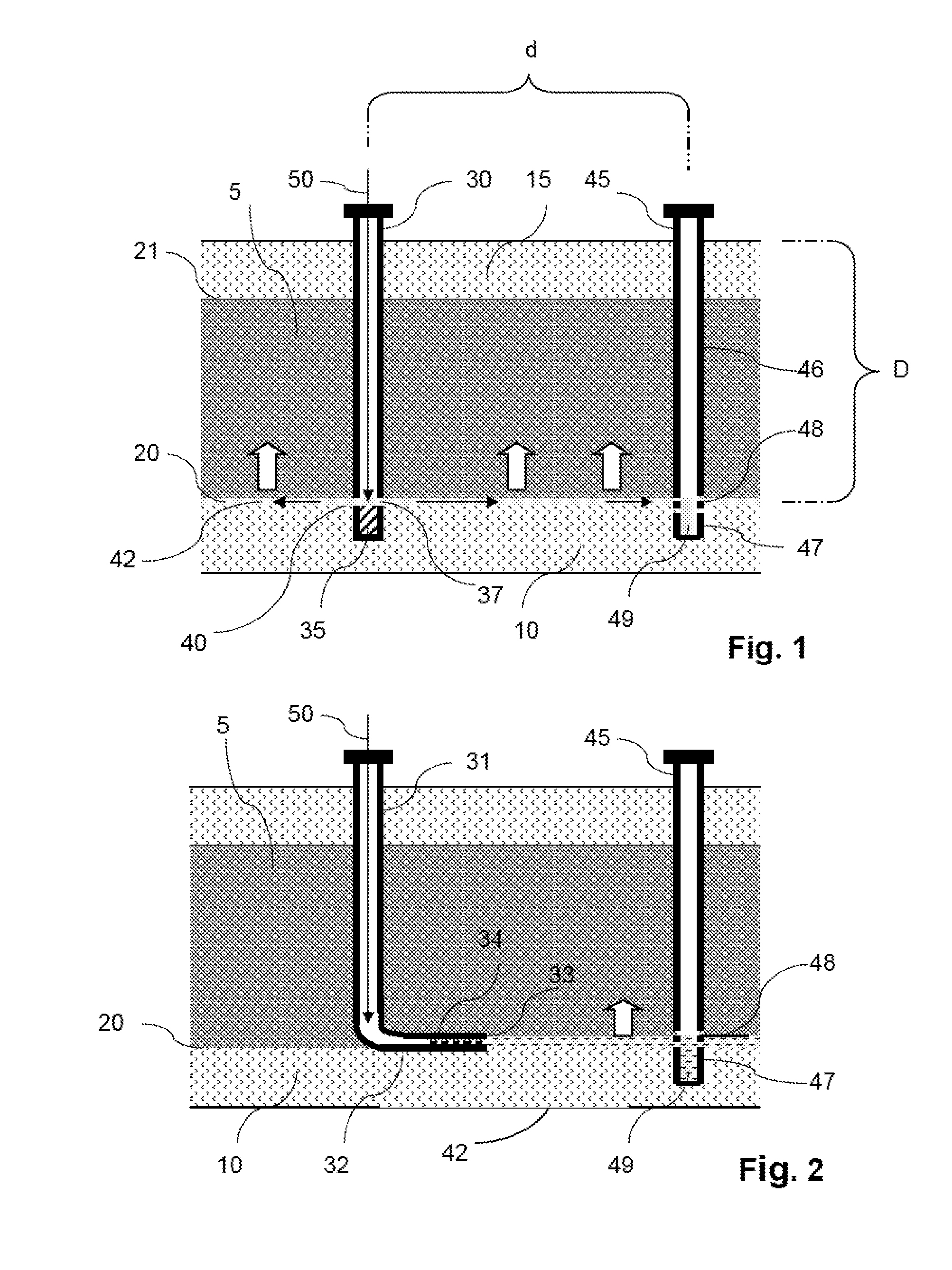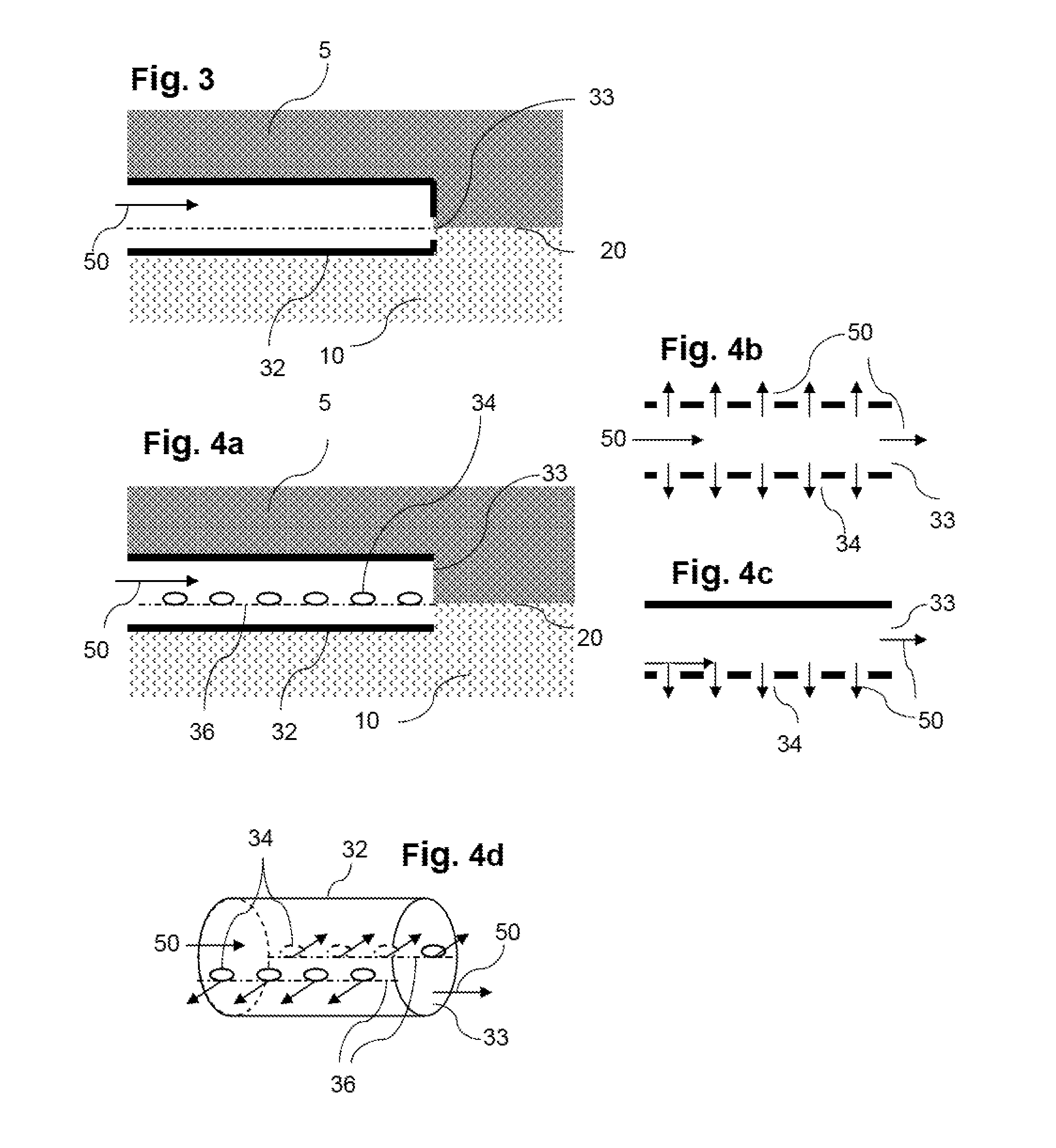Lithological displacement of an evaporite mineral stratum
- Summary
- Abstract
- Description
- Claims
- Application Information
AI Technical Summary
Benefits of technology
Problems solved by technology
Method used
Image
Examples
Embodiment Construction
[0108]The following detailed description illustrates embodiments of the present invention by way of example and not necessarily by way of limitation.
[0109]It should be noted that any feature described with respect to one aspect or one embodiment is interchangeable with another aspect or embodiment unless otherwise stated.
[0110]The present invention relates to in situ solution mining of a mineral in an underground formation comprising an evaporite mineral stratum in which the mineral is soluble in a removal (liquid) solvent, such evaporite stratum lying immediately above a non-evaporite stratum of a different composition which is insoluble in such removal solvent, wherein the underground formation has a defined weak parting interface between the two strata, in which an interface gap is initially created by lithologically displacement (lift) of the evaporite stratum and the overburden at the interface by application of a lifting hydraulic pressure greater than the overburden pressure,...
PUM
 Login to View More
Login to View More Abstract
Description
Claims
Application Information
 Login to View More
Login to View More - R&D
- Intellectual Property
- Life Sciences
- Materials
- Tech Scout
- Unparalleled Data Quality
- Higher Quality Content
- 60% Fewer Hallucinations
Browse by: Latest US Patents, China's latest patents, Technical Efficacy Thesaurus, Application Domain, Technology Topic, Popular Technical Reports.
© 2025 PatSnap. All rights reserved.Legal|Privacy policy|Modern Slavery Act Transparency Statement|Sitemap|About US| Contact US: help@patsnap.com



